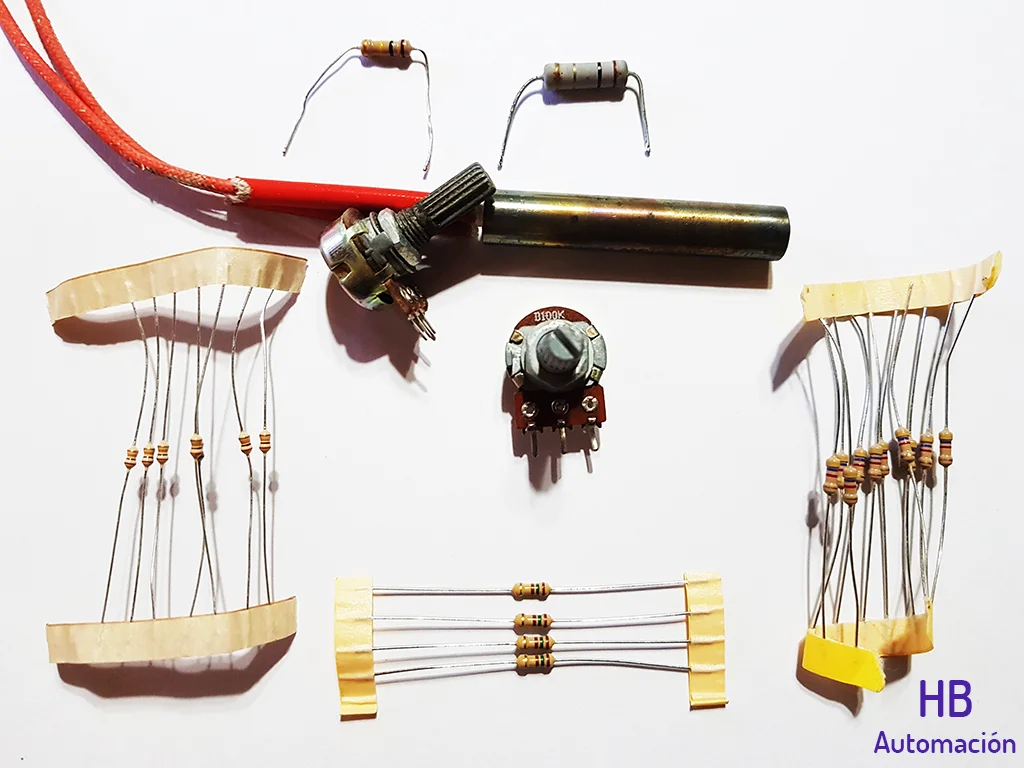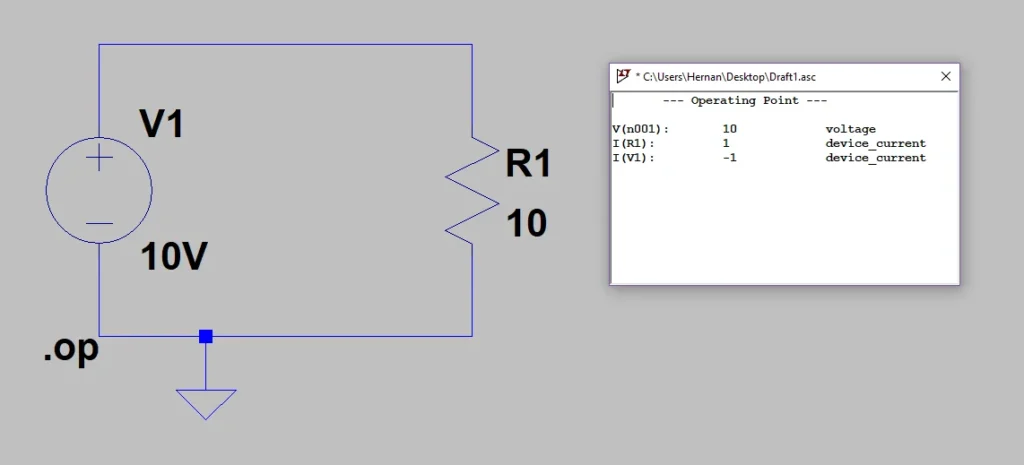Introduction
In this article we will see the concept of electrical resistance, resistive elements and we will analyze a simple circuit to see the effect it has on the current.
What is electrical resistance?
It is a property of matter that indicates the difficulty that the electric current has in crossing it.
There are materials that have a low resistance, in which the current can flow easily, and there are other materials that have a high resistance, in which it is more difficult for the current to circulate.
Materials with low resistance are called conductors and materials with high resistance are called insulators.
Resistive elements

On the other hand “Resistance” is the name given to certain elements that are built with the purpose of having a predictable resistance value, we can see some examples in figure 1.
These elements are used in circuits to make currents behave in a certain way.
Effect on the current in a simple circuit
We are going to simulate a simple circuit with a voltage source of 10 Volts of direct current connected to a resistor. The objective will be to analyze how the current is in the circuit.
For the simulation we are going to use LT Spice, click here to go to the article where we downloaded and installed this software and also show how to draw the next schematic and configure the simulation.

In the first case, illustrated in figure 2, the resistance of the circuit is 1000Ω or 1KΩ (kilo ohm) as it is most often called.
When running the simulation we see that the resulting current is 0.01A (Ampere) or 10mA (milli Ampere).

If we now change the resistance value to 100 Ω and simulate again, the current now increases to 100 mA (Figure 3).
In the third test we give the resistance a value of 10 Ω and when simulating the current increases to 1 A, figure 4.

What we observe is that when the resistance value decreases, keeping all the other parameters of the fixed circuit, the current increases.
Conclusion
Resistance is a property that determines how good a material is as an electricity conductor.
Materials with low resistance such as metals are good conductors of electricity, while materials with high resistance are called insulators, such as plastic.
In a simple electrical circuit we can see how the current behaves when we change the resistance, leaving the other parameters fixed. We see that they have an inverse relationship, the lower the resistance, the higher the current.
